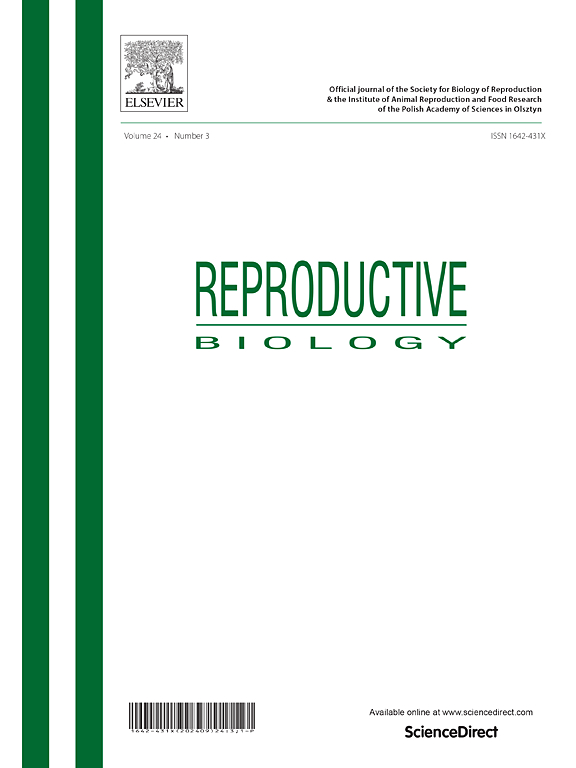E12.5 whole mouse embryo culture
IF 2.5
3区 生物学
Q3 REPRODUCTIVE BIOLOGY
引用次数: 0
Abstract
Ex utero culture of postimplantation embryos remains one of the unsolved tasks in developmental biology. This technique may be required for infertility treatment, observation of embryo development and assessing the embryotoxicity of certain chemical agents. We describe novel method for E12.5 mouse embryos whole embryo culture system, which maintains embryo viability for 24 h. The culture system is based on the bubbling of pure oxygen through the culture medium. The oxygen was obtained by a chemical method. Each tube containing three embryos held 8 ml of culture medium composed of 6 ml of FBS, 2 ml of DMEM/F12, 80 μl of 40 % glucose and 30 μl of antibiotics (a mixture of penicillin 5000 UI/ml and streptomycin 5000 μg/ml). We observed initiation of auricle formation, as well as progression of eye development. Embryo viability was confirmed by the presence of heartbeat. The ratio of viable embryos after 24 h of culture was 27,78 %. However, many viable embryos exhibited massive hemorrhage attributed to oxygen insufficiency. The described culture system may be useful for the investigation of teratogenic compounds on the development of organs. Nonetheless, it is not suitable for ex utero culture of mouse embryos at more advanced stages due to the fact that embryos at such stages require more oxygen for the development than can be dissolved in the culture medium and consumed by embryos through diffusion. A potential solution to this issue is connecting the embryonic bloodstream to an oxygenator.
求助全文
约1分钟内获得全文
求助全文
来源期刊

Reproductive biology
生物-生殖生物学
CiteScore
3.90
自引率
0.00%
发文量
95
审稿时长
29 days
期刊介绍:
An official journal of the Society for Biology of Reproduction and the Institute of Animal Reproduction and Food Research of Polish Academy of Sciences in Olsztyn, Poland.
Reproductive Biology is an international, peer-reviewed journal covering all aspects of reproduction in vertebrates. The journal invites original research papers, short communications, review articles and commentaries dealing with reproductive physiology, endocrinology, immunology, molecular and cellular biology, receptor studies, animal breeding as well as andrology, embryology, infertility, assisted reproduction and contraception. Papers from both basic and clinical research will be considered.
 求助内容:
求助内容: 应助结果提醒方式:
应助结果提醒方式:


